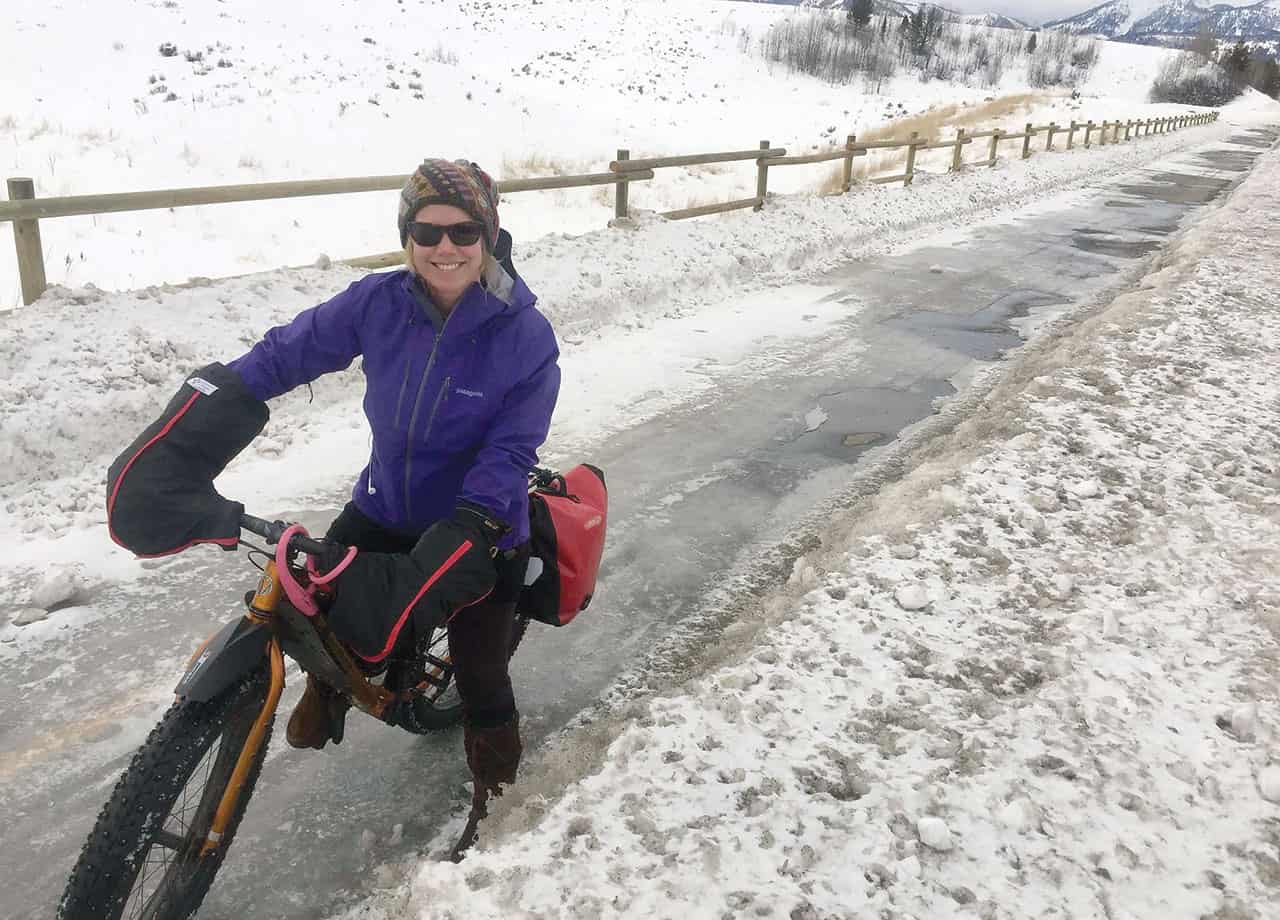Read The
Current Issue
Ride This Way
The key to commuting by bike year-round in Jackson Hole comes down to one word: planning.
By Rachel Walker

IT’S ONE THING to roll into work on two wheels when the sun is out and the roads are clear. It’s quite another to ride your bike to work in the winter, especially in Jackson Hole, where temperatures often plummet below zero, the days are short, and a big dump means fighting traffic that may include skiers and snowplows.
And yet that’s what a hardy and growing contingent of valley residents do. With Jackson’s investment in bike lanes and multiuse pathways, winter riding has never been easier, says Mollie Houkom, who commutes five miles round-trip by bike from her South Park home to her job at Lotus Cafe. In recent years, Teton County/Jackson Parks and Recreation has increased its pathways winter grooming schedule to six days a week on a rotating basis (not every trail is groomed every day) so that travel routes around town can be reliable for commuting. “We expanded our plowing program, and there was an explosion in popularity of fat bikes,” says Brian Schilling, Jackson Hole Community Pathways coordinator. “So there was growing demand for winter bikes right around the same time we started expanding our services.”
Of course, “easy” is in the eye of the beholder (or bike rider, as it were); commuting by bike in the winter requires decidedly more logistics than riding in the summer. First, there’s the inconsistent road surface. Most bike riders know what dry asphalt feels like beneath their wheels. But when that asphalt is covered with a mix of ice and dry snow, the surface is unpredictable—it could be a skating rink or like riding in sand. Typically, though, “Ice is only a problem later in winter when drastic temperature swings result in a melt/freeze cycle,” says Walt Berling, a valley resident since 1976 who rides his bike year-round from his Wilson home to his job at Jackson Hole High School. (Berling retired this year, but still relies on his bike for primary transportation.)
To safeguard against sliding, Berling, Houkom, and other winter bike commuters have several options. One is to use studded snow tires, available at local bike stores. Another is to invest in a fat bike, a type of ride that has exploded in popularity in the last five years. Fat bikes have tires that are about 4 inches wide. (A normal mountain bike’s tires are about 2.5 inches wide.) The extra width allows fat bikes to ride on top of packed snow without sinking through.
Next, there’s temperature regulation. Winter cyclists juggle keeping their core cool and their extremities warm. Houkom’s solution is layers, heavy boots, and thick mittens.
Another potential impediment: visibility. During the winter months, the days are short; winter commuters are almost guaranteed to bike in the dark at one end of their ride. But Berling says it’s not a problem. “There are really nice lights on the market these days, and they’re all rechargeable, plug into a USB, and they’re not that expensive—you can find a great set of lights for under $100,” he says. Riders should have lights on the front and back of their bikes. Houkom also mounts a headlamp to her helmet, for added visibility.
BOTH HOUKOM AND Berling insist that riding year-round enhances their quality of life. The proliferation of bike paths in and around Jackson and the completion of the nonmotorized bridge over the Snake River have made riding significantly safer and less intimidating.
And though planning is required, riding year-round delivers a range of benefits. Berling says that his bike commute was essential for preparing for his workday and then decompressing after teaching special ed to learning-disabled kids. Houkom appreciates how riding immerses her in the outdoors and the community. When you’re face-to-face with the frozen moisture in the air—the ice crystals collecting on the fences you ride by—and the reflection of sunlight on the snow-capped peaks, you’re immersed in the area’s quiet winter beauty. And that alone makes the effort worth it.




